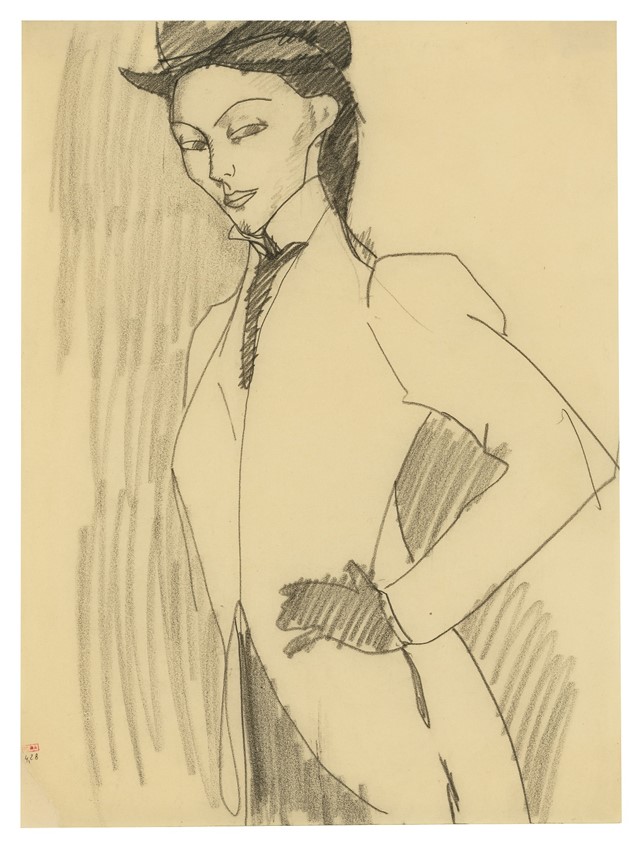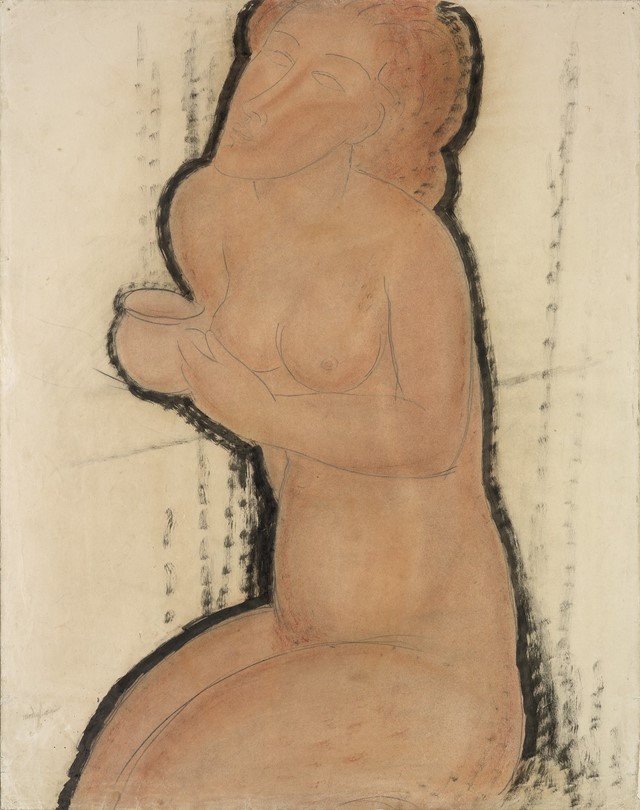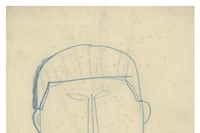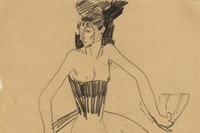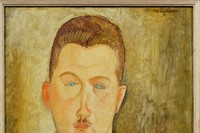We consider the elements that defined a unique and extraordinary artist
When Amedeo Modigliani was eleven, his mother wrote in her diaries, “The child's character is still so unformed that I cannot say what I think of it. We shall have to see what’s inside this chrysalis. Perhaps an artist?” A prophetic statement indeed, as despite his premature death from tubercular meningitis at just 35, her son would become one of the most important modern Italian painters, a key exponent of the avant-garde movement that flourished in Paris during the first years of the 20th century.
Largely ignored during his lifetime – his one solo show was shut down on its opening day in protest at the perceived obscenity of his sumptuous, sloe-eyed nudes – today Modigliani is revered; the pioneer of a style that cannot truly be aligned with anyone else. Many have tried – after his death in 1920, Montparnasse was filled with aspiring painters drowning themselves in drink and drugs in an attempt to cultivate the intoxicated fervour credited for Modigliani’s genius. But none matched him, either in creativity or the capacity for excess. He is the subject of legend, his short life breeding both extraordinary work and infamous stories.
So to celebrate the opening of Modigliani: A Unique Artistic Voice at the Estorick Collection, we consider the life of the artist, the literary and artistic inspirations that forged his work, the people who shaped him and the intangible élan that cemented his fame.
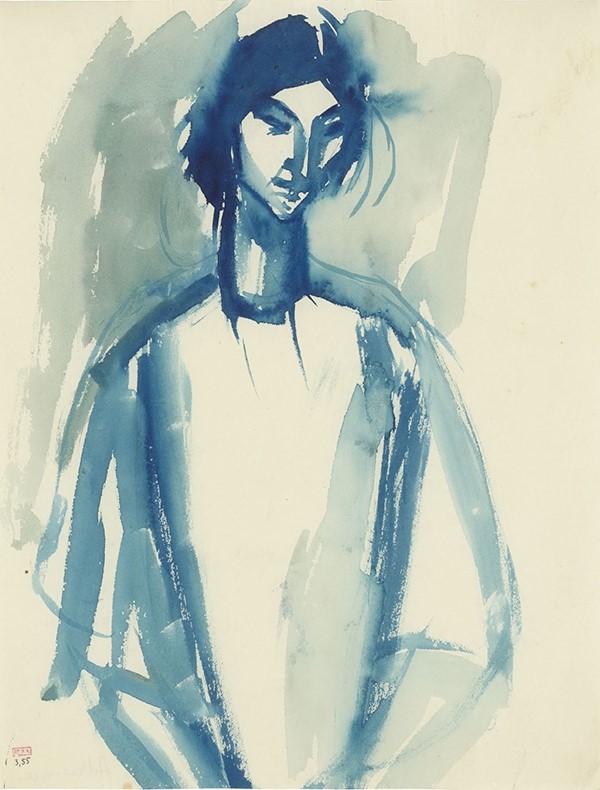
Influences
Modigliani was extraordinary for the diversity and depth of his influences, which spanned art, literature and philosophy. Educated at home by his culturally sophisticated mother, when delirious with typhoid aged 14, he raved of his desire to visit Florence to see the masterpieces in the Uffizi. Upon his recovery, his mother, convinced now of his vocation, took her son on a tour of Italy’s greatest art, before enrolling him with the Livorno painting master Guglielmo Micheli.
This began a discourse that would last for the rest of his life. From the Macchiaoili influences of Micheli – which he swiftly rejected – to the Nietzsche he was reading – which lasted longer – Modigliani filled his canvases with his ideas and learning. Arriving in Paris, new influences came thick and fast. Flavours of Toulouse-Lautrec, Cézanne, the wonders of the African galleries at the Louvre all appear, alongside the Romanian sculptor Constantin Brâncuși, the emerging Cubist movement and the poetry of Lautréamont. The perceived simplicity of his work is deceptive – as his friend and patron Paul Alexandre wrote later, “Modigliani never painted without meaning.”
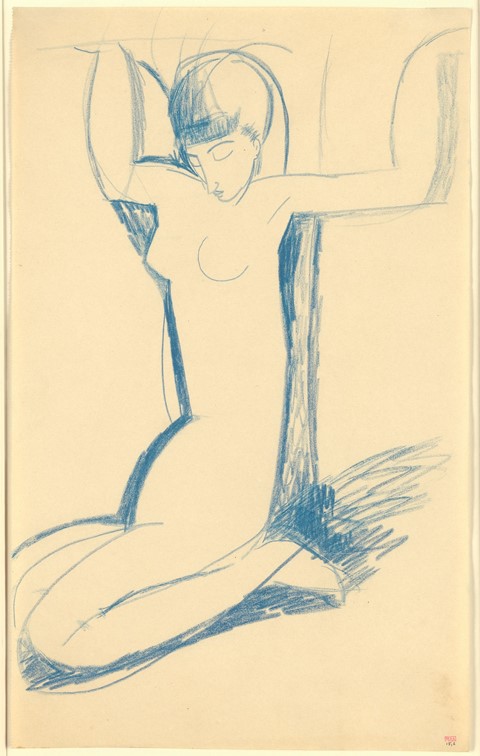
Women
Modigliani was incredibly handsome, and despite his diminutive stature – Alexandre reported him as being less than 5’3” – and destructive, addictive habits, women adored him. His varied affairs tell a fascinating story, from his avid interest in painting nudes at art school – which doubled as an opportunity to pursue the housemaids – to the women he met and loved in Paris. Foremost among these was the married Russian poet Anna Akhmatova, who arrived in the city in 1910, aged 21. The two united over a love of poetry, and were entangled for more than a year of meetings and passionate love letters. Her return to her husband and Russia was a huge blow to the artist, with some historians blaming it for Modigliani’s subsequent decline into alcoholism and drugs. Akhmatova’s figure and face can be found in a number of Modigliani’s exquisite, Egypt inspired caryatid studies, including Kneeling Blue Caryatid above.
There were innumerable other affairs – notably Beatrice Hastings, the English writer and former lover of Katherine Mansfield, with whom he was involved for two turbulent years and a number of portraits. His last love was Jeanne Hébuterne, a strikingly beautiful 19-year-old art student. They met in 1917, and Jeanne gave birth to their daughter a year later, but there was a heartbreaking end to their story. The day after Modigliani’s death in 1920, while eight months pregnant with their second child, the distraught Jeanne flung herself from a fifth floor window.
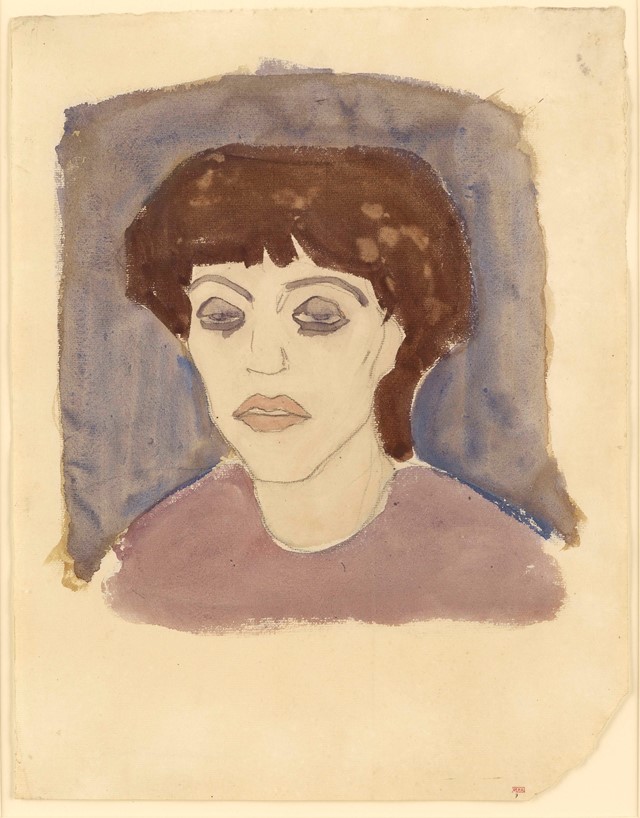
Paris
Modigliani arrived in Paris in 1906, after stints in Rome, Florence and Venice, and it was in France that he would spend the majority of the rest of his life. Like so many others, he headed straight for the bohemian quarter, setting up among his fellow penniless artists in Montparnasse. At first striking for his relative respectability, within a year he had rejected the strictures of his studious, relatively affluent past, to take on the mantle of the ultimate vagabond artist. Addicted to drink and drugs, notorious for his outlandish antics and brazen affairs, nonetheless his output increased. He produced hundreds of sketches and, by way of the portraits of his illustrious friends – Picasso, Diego Rivera, Max Jacob, Jean Cocteau – an unofficial Who’s Who of Paris bohemia.
France's capital was a hotbed of creativity in the period, and Modigliani drank deeply from the wealth of inspiration and energy. Hounded by illness, he believed his life was doomed to be a short one, so he committed every excess, tried every drug, drank every last glass of absinthe. His poor health was exacerbated by the poverty and squalor in which he lived, and despite having many friends, patrons and mistresses who were willing to help, he never managed to sell a picture for more than a few francs – ironic considering the millions they sell for today. But the privations of his lifestyle never trickle onto his canvases, which instead resonate with a passion, a verve and a unique standpoint on the world. Words found scrawled on the wall of one of his studios sum up this spirit – "You are not alive unless you know you are living."
Modigliani: A Unique Artistic Voice is at the Estorick Collection until June 28.
